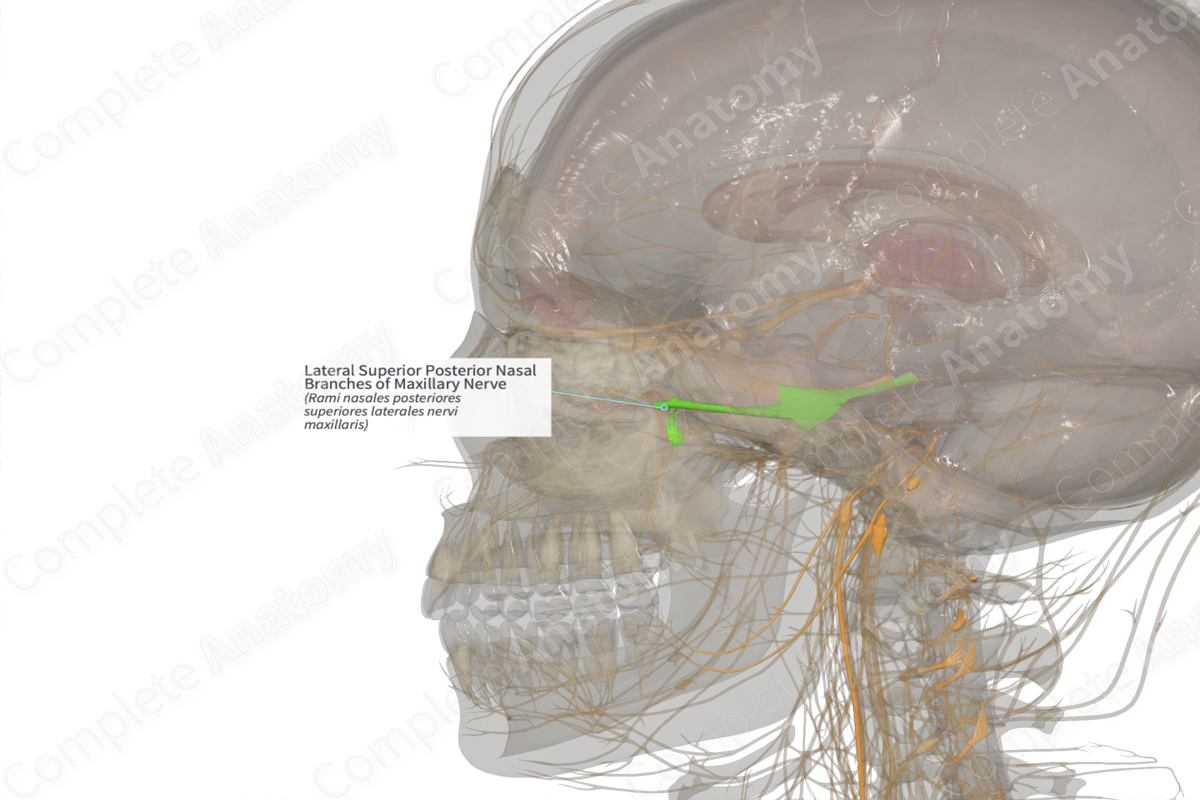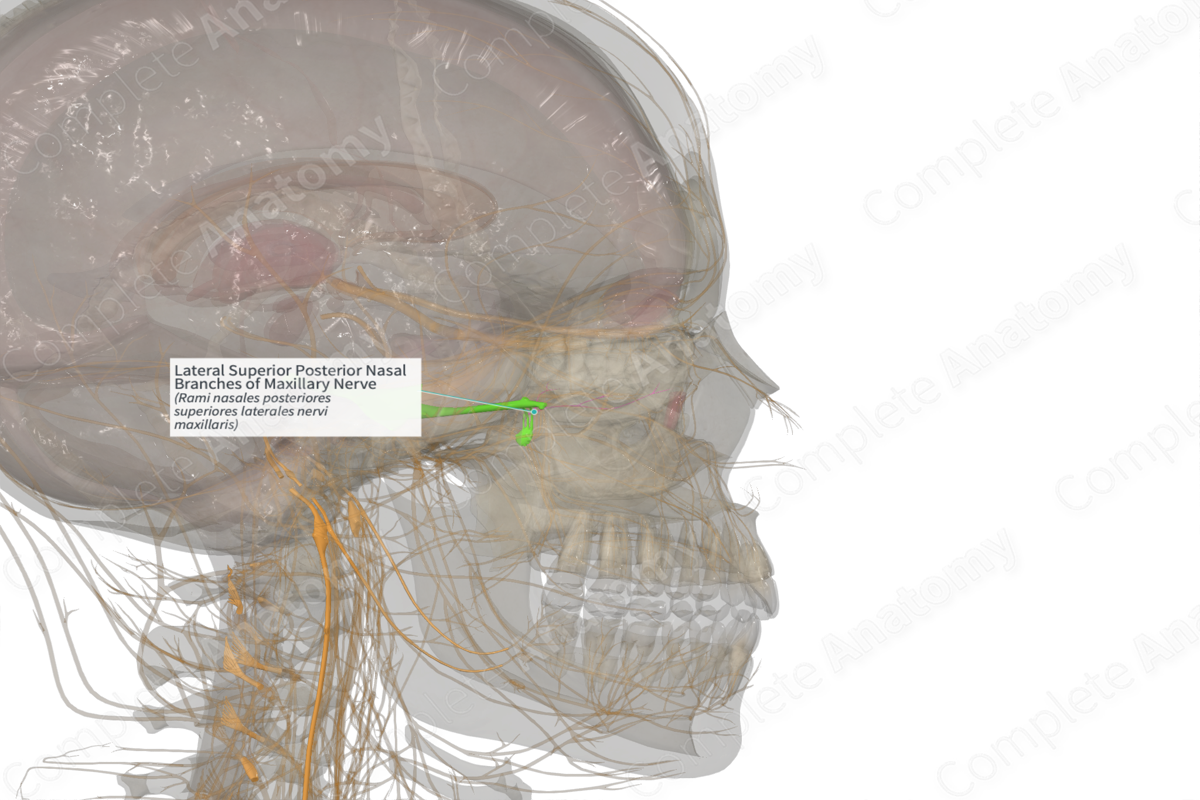
Lateral Superior Posterior Nasal Branches of Maxillary Nerve (Right)
Rami nasales posteriores superiores laterales nervi maxillaris
Read moreQuick Facts
Origin: Posterior superior nasal nerve.
Course: Run anteriorly on the lateral surface of the nasal cavity, sending branches to the superior and middle concha.
Branches: None.
Supply: Sensory: convey general sensation from the mucosa of the lateral nasal wall and ethmoid air cells; Parasympathetic: innervation of mucosal glands of the same territories.
Related parts of the anatomy
Origin
The lateral superior posterior nasal branches of the maxillary nerve originate from the posterior superior nasal nerve just after its entrance into the nasal cavity.
Course
From its origin, the lateral superior posterior nasal branches run anteriorly along the lateral wall of the nasal cavity. It splits with some fibers running to the superior concha, others descending slightly to the middle concha, and other fibers penetrating the underlying ethmoid air cells.
Branches
There are no named branches.
Supplied Structures
The lateral superior posterior nasal nerve is a mixed nerve carrying sensory and parasympathetic fibers. The sensory fibers have cell bodies located in the trigeminal ganglion, while the parasympathetic fibers originate in the pterygopalatine ganglion.
The sensory fibers convey general sense information from the superior and middle nasal concha of the lateral nasal wall, as well as underlying ethmoid air cells.
The parasympathetic fibers innervate the small mucosal glands of the same nasal territories.
Learn more about this topic from other Elsevier products
Maxillary Nerve

The maxillary nerve, or second division of the trigeminal, is a sensory nerve that crosses the pterygopalatine fossa, traverses the orbit in the infraorbital groove and canal in the floor of the orbit, and appears upon the face at the infraorbital foramen as the infraorbital nerve.

